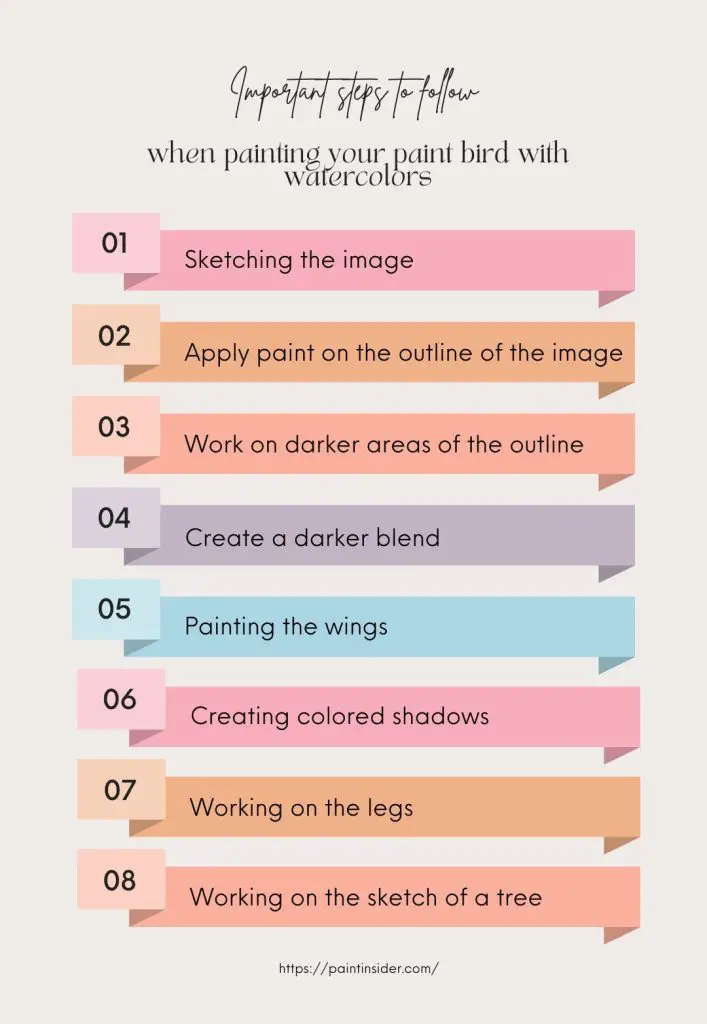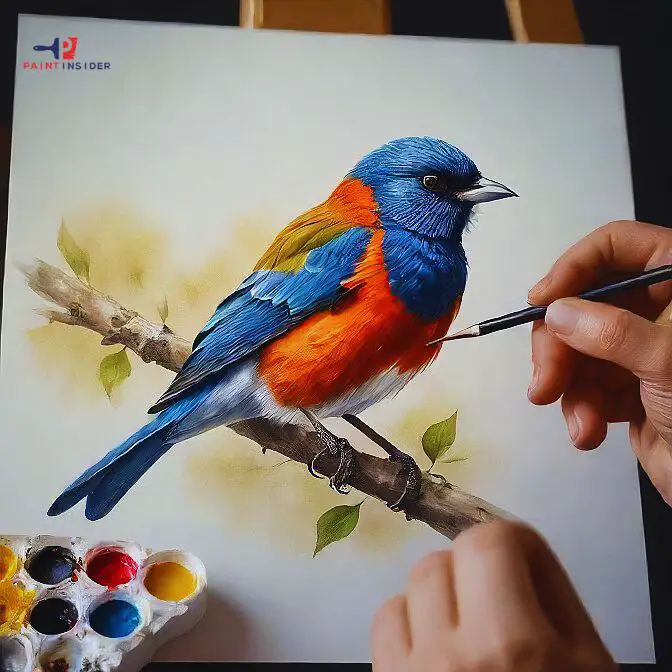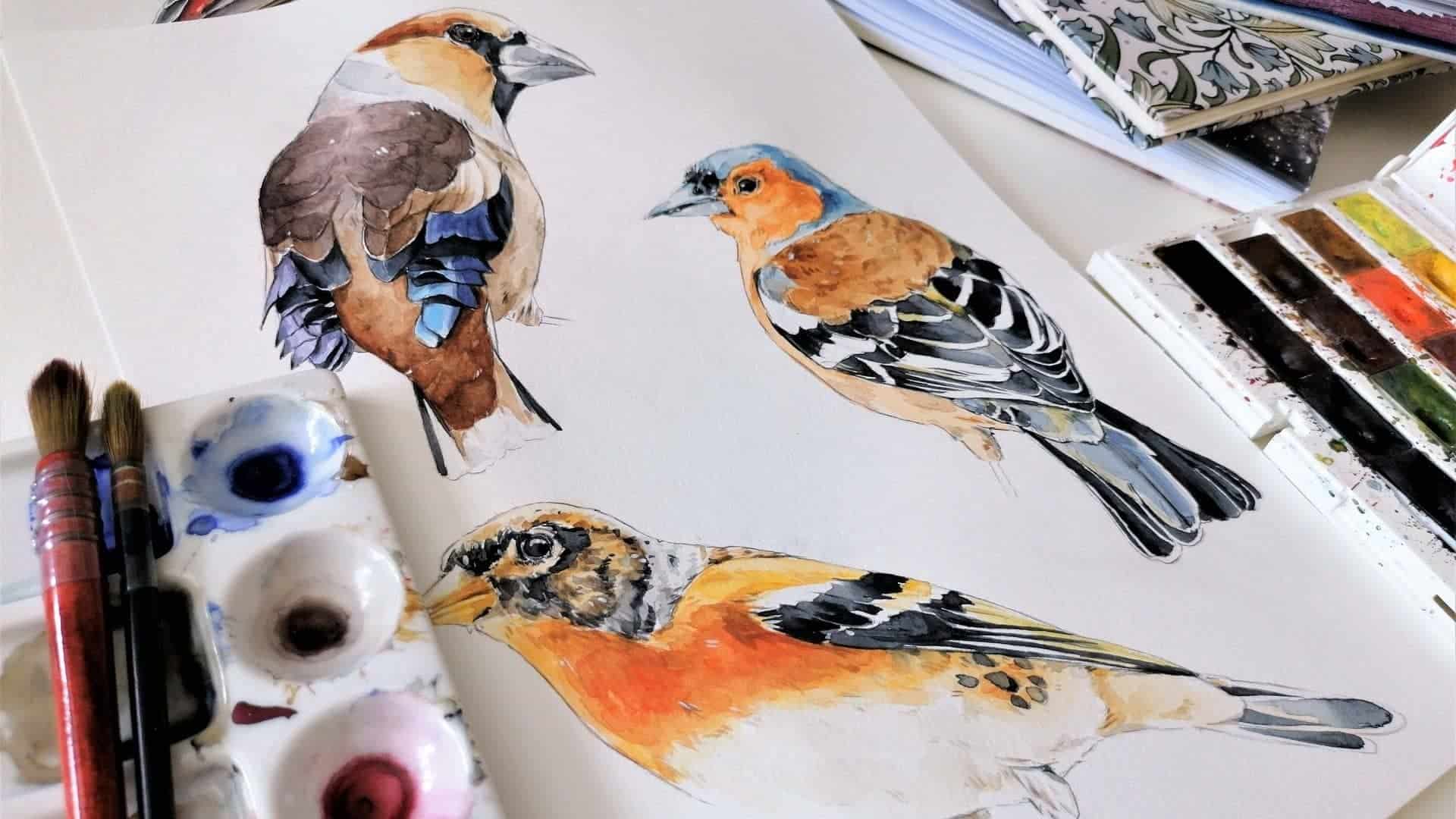You may see painting as a waste of time, but it sharpens creativity and skills. It enhances paint mixing abilities through various projects, like miniatures. This article will briefly explore how to paint a bird in watercolors.
Introduction: Understanding Watercolor Techniques for Birds
Painting a bird with watercolors accrues many benefits, such as honing your artistic abilities in paint blending and color prediction. So, how do you color your bird with watercolor? Read on for more insightful content.
Watercolors are clear, which is why you should consider the availability of light shapes and quality as an essential must-have in this whole exercise. To produce a clean piece of water painting, you need to understand the many characteristics of watercolor. This type of knowledge will go a long way in developing your understanding of color hues and shades.
Are you still reading? It is worth mentioning that painting a bird with watercolor is simple; however, you need to pay every bit of attention as may be required. This calls you to ensure you have the right materials at your disposal before starting the exercise. All of your input is required to create a stunning and quality piece of painting.
Materials needed when painting a bird with water
Now that you have gained a clue on how to paint a bird with watercolor, it is important to know the essential materials that you need for this exercise. Ensure you select the right materials for every task; the same case applies to colors. Some of the essential materials you need include:
- Watercolor paper
- Paintbrush
- Kneaded eraser
- Pencil
- Masking tape/Painter’s tape
- Paper towel
- Water container
Watercolor paper
You are advised to try out different watercolor papers to enable you to pick the right one for your bird painting exercise common watercolor papers to choose from, include hot press and cold press papers. Heavy-duty watercolor paper is recommended because of its perfect absorbent abilities. However, ensure you work with watercolor paper that best suits your style.
Paintbrush.
Choose the right size of paint. Go for smaller brushes to help you find details on your painting. It is advisable to consider using synthetic brushes since you are dealing with watercolors.
Kneaded eraser.
An eraser is a must-have material when painting a bird with watercolors. At the onset of the whole exercise, you will make sketches, and the eraser will come in handy in this exercise.
Pencil.
A pencil is an important tool that you will use to make the drawing of the bird to help you work on your image quickly.
Masking tape.
A tape is not much of a necessity; however, you can use it to protect the edges of your watercolor paper while doing the painting and hold it in place.
Paper wipe.
You can use this to wipe water paint residues.
Water container.
You will need this to hold clean water which you will use to clean your brush. Additionally, you can use this water as a thinner for your watercolors.
Important steps to follow when painting your paint bird with watercolors
When you have all the necessary materials in place, you are now set to begin the exercise. Let us look at key steps you should follow throughout the whole exercise.

Step 1. Sketching the image
Skillfully, sketch the bird bringing out all the contours. Be more creative and add a sketch of a tree where the bird is patched. With that noted, use your eraser to develop your outline.
Step 2. Apply paint on the outline of the image
The type of bird you want to do with( how to paint a bird with watercolors) will dictate the color you will use. You will need to start applying the color to the outline in bits.
Step 3. Work on darker areas of the outline
Put more intensity to the image by incorporating darker colors in the painting. If you are keen enough, you will notice that your image is beginning to take shape. Maintain the right colors at this point to avoid distorting the appearance of the image.
Step 4. Create a darker blend
Dark mixtures will be used to do touches on the eyes and beak, and then use the bits of paint remaining on your brush to add shades to the head. Touching the eyes and the beak with black ensures your artistic style is coming out perfectly.
Step 5. Painting the wings
Select an appropriate color to work on the wings. You will need to bring out the texture of your bird’s wings by incorporating strokes.
Step 6. Creating colored shadows
Utilize a dark-colored hue to add quality to the shadow and bring out the texture of the wings.
Step 7. Working on the legs
To work on the bird’s legs, you will have to use darker colors and hues, after which you add more intense colors to highlight your image
Step 8. Working on the sketch of a tree
Bring out the texture of the tree by stroking paint on the outline. Using light pigments will do the trick perfectly.
Enjoy your artistic work!
Adding Details with Fine Brushwork Techniques
To paint a bird in watercolors, mastering brush techniques is essential for bringing it to life. One effective method is the dry brush technique, where you lightly load your brush with a little paint and drag it across textured paper. This creates the look of delicate feathers, adding depth and realism. As you layer these gentle strokes, vary the pressure on your brush; lighter touches can suggest soft underbellies, while firmer strokes can show the strength of wing feathers.
Using a rigger or liner brush helps create detailed work that makes your bird stand out. These brushes are great for precision and perfect for adding tiny claws or complex feather patterns. As you paint these details, consider adding unexpected colors, like hints of blue or green in shaded areas. This will enhance contrast and add vibrancy to your piece. By combining careful color choices with skilled techniques, you can turn an ordinary watercolor scene into an extraordinary artwork that connects with viewers.
Incorporating Textures to Enhance Realism
When painting a bird in watercolors, incorporating textures can significantly enhance the realism of your artwork. One effective technique is to layer different shades and tones, allowing the underlying colors to peek through. This mimics the natural variation found in feathers, creating a more lifelike appearance. Use a dry brush technique for fine details gently dragging a barely damp brush over the paper will create delicate lines that replicate feather marks, adding depth and intrigue.
Additionally, consider using salt or sponges as unique tools to introduce varied textures. Sprinkling sea salt onto wet paint can produce unexpected patterns that echo the intricate designs of plumage. Similarly, dabbing with a sponge can uplift areas where reflections or softness might occur, further enriching your watercolor composition. By thoughtfully applying these techniques, you not only capture the essence of your feathered subject but also invite viewers into a tactile experience that makes your painting come alive.
Finalizing Your Painting with Touch-ups
Touch-ups are often the hidden gems of a watercolor painting, adding vibrancy and clarity. After finishing your initial layers, take a step back to assess the overall composition. Identify areas that need extra attention, like softening edges around your bird’s feathers or enhancing subtle highlights on its wings. A damp brush can help you lift color where needed, creating a more natural look while preserving the fluidity of watercolors.
Don’t underestimate the power of contrast to make your subject stand out. Add a hint of complementary colors in shadowed areas to create depth without cluttering the piece. Sometimes, a small change, a bit of white or an unexpected splash of color, can turn an average painting into something special. Trust your instincts; every touch-up is not just a correction but also a part of your artistic journey. Embrace this process as you learn to paint a bird in watercolors with confidence and curiosity.

Conclusion: Celebrate Your Journey in Watercolors
As you finish your journey with watercolors, take a moment to reflect on the colorful experiences each brushstroke has provided. From painting a bird to trying abstract art, every piece shows not just a subject but also your personal growth. Each finished work tells a story of patience and determination, turning brief moments into art that can inspire others.
Celebrate how your technique and style have grown. Embrace your early attempts at capturing nature’s beauty; they built the foundation for your skills today. As you explore watercolor further, welcome new challenges; each will enhance your art and spark new inspiration. Remember, it’s not just about being perfect; it’s about enjoying the journey, nurturing your creativity, and daring to experiment with color, form, and emotion.

